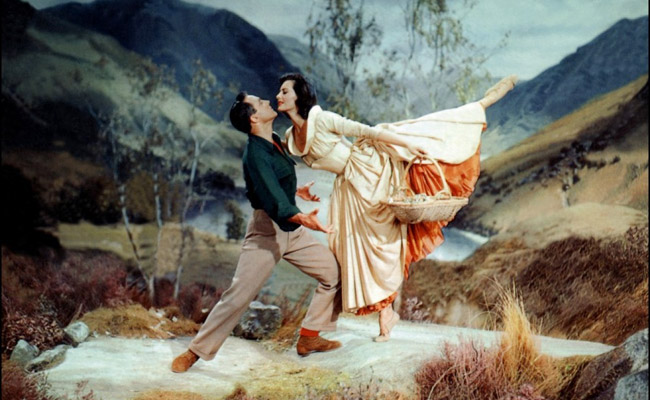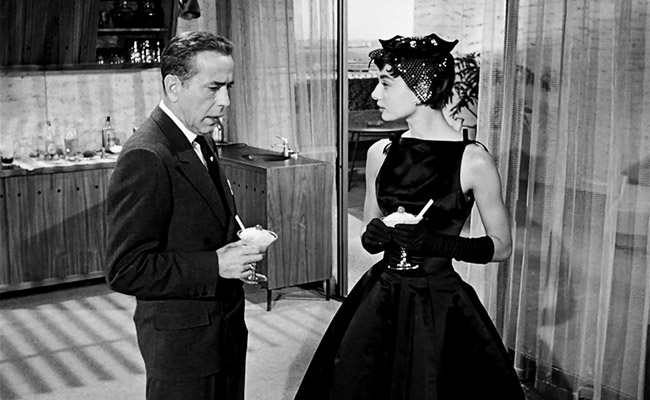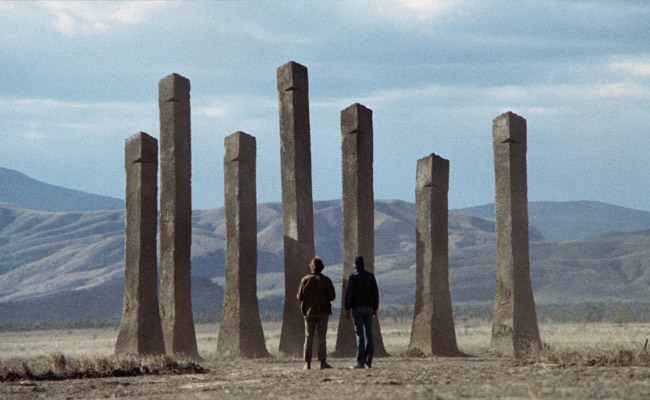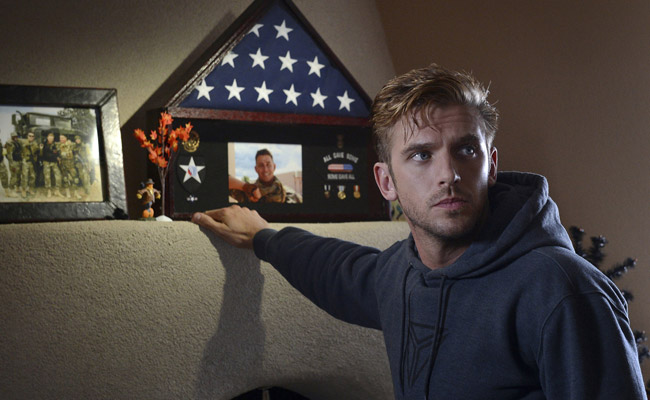
Metro-Goldwyn-Mayer
The Fall movie season has arrived and this week includes the Labor Day weekend in the US, resulting in far fewer than usual new film premieres. Of those that did premiere, many of them fall into the unmemorable category but there are a few notable titles, particularly in 1924 and 1934 which had films based on well-known pieces of literature. 1944 produced the last film from a popular director for his long-time studio, 1964 saw Russ Meyer go from ‘nudies’ to more serious films, 1974 gave us a sci-fi film that has developed a cult following, 1994 had one film that focused on a group of real life characters, and another that attempted to tell a real-life story that failed on every level. 2004 had a horror remake and a horror/sci-fi sequel, and 2014 had a well-regarded thriller. 1954 was this week’s banner year with a classic MGM musical and a light comedy with Audrey Hepburn and an iconic dress. Scroll down to see the films that premiered this week and tell us if any of your favorites are celebrating milestone anniversaries.
1924
- September 7 – Another Man’s Wife (USA, Regal Pictures)
- September 7 – Big Timber (USA, Universal Pictures)
- September 7 – Dante’s Inferno (USA, Fox Film Corporation)
- September 7 – Vanity’s Price (USA, Gothic Pictures)
- September 8 – Honor Among Men (USA, Fox Film Corporation)
- September 8 – The Red Lily (USA, Metro-Goldwyn Pictures Corporation)
Big Timber is adapted from the 1913 novel The Heart of the Night Wind by Vingie E. Roe.
Dante’s Inferno is adapted from Inferno, part of Dante Alighieri’s epic poem Divine Comedy, and mixes in plot point from Charls Dickens’ A Christmas Carol. Fox remade the film in 1935 which reused some of the 1924 Hell footage. Some prints of the film featured the Hell sequences tinted red. The 1924 film featured full nudity in some scenes. Comic actor Bud Jamison appears in blackface as a butler. Ken Russell used footage from the film with his own digital effects to create a hallucination sequence in Altered States. The UCLA Film and Television Archive has preserved three of the film’s five reels. A complete print is said to survive at the Museum of Modern Art.
Vanity’s Price, a lost film, brought Josef von Sternberg to the attention of critics for his handling of two sequences in the film. Honor Among Men is considered a lost film. A print of The Red Lily does exist, according to the Library of Congress.
1934
- September 6 – Keep It Quiet (UK, British Lion Film Corporation)
- September 6 – There Goes Susie (UK, British International Pictures)
- September 7 – Have a Heart (USA, Metro-Goldwyn-Mayer)
- September 7 – The Count of Monte Cristo (USA, Reliance Pictures)
- September 11 – Girl in Danger (USA, Columbia Pictures)
Keep It Quiet has no known US theatrical release date. There Goes Susie was released in the US on December 31, 1935 as Scandals of Paris.
Keep It Quiet was produced as a quota quickie for MGM’s British distribution arm. There Goes Susie was based on a story by Charlie Roellinghoff and Hans Jacoby, and is a remake of the 1933 German film Marion, That’s Not Nice.
The Count of Monte Cristo is based on the 1844 novel by Alexandre Dumas. Five silent film versions were produced before the 1934 sound version. Frederic March was intended to star, but the role went to Robert Donat under an international star loan agreement negotiated by Joseph Schenck of United Artists. Scenes from the film were used in V for Vendetta, as the title character notes it is his favorite film.
Girl in Danger was the fourth and final film in the Inspector Steve Trent series starring Ralph Bellamy. The film’s working title was By Persons Unknown.
1944
- September 5 – Gildersleeve’s Ghost (USA, RKO Radio Pictures)
- September 5 – Rainbow Island (USA, Paramount Pictures)
- September 6 – The Great Moment (USA, Paramount Pictures)
- September 8 – Moonlight and Cactus (USA, Universal Pictures)
- September 8 – Swing Hostess (USA, Sigmund Neufeld Productions)
- September 9 – Crime by Night (USA, Warner Bros.-First National Pictures)
Gildersleeve’s Ghost is the fourth and final film in the Gildersleeve series.
Dorothy Lamour was reluctant to take the lead in Rainbow Island, but when Paramount decided to use contract player Yvonne De Carlo instead, Lamour changed her mind and De Carlo was relegated to a bit player.
The Great Moment is based on the book Triumph Over Pain (1940) by René Fülöp-Miller, which tells the story of Dr. William Thomas Green Morton, a 19th-century Boston dentist who discovered the use of ether for general anesthesia. The film was completed in 1942 but not released for two years as Paramount did not like the film director Preston Sturges turned in. The studio pulled the film from Sturges, re-edited and re-titled it, and marketed it as if it were one of Sturges’ comedies. By the time the film was released, Sturges had already left Paramount. Working titles for the film were Immortal Secret, Great Without Glory, Morton the Magnificent and Triumph Over Pain. Gary Cooper was to star with Walter Brennan co-starring, but Cooper left Paramount and the project was delayed. Walter Huston was considered to star, but Struges had just completed filming The Palm Beach Story, so his star Joel McCrea got the lead, with William Demarest replacing Brennan.
Moonlight and Cactus starred The Andrews Sisters. Crime by Night was based on the novel Forty Whacks by Geoffrey Homes. The film was originally announced as a starring vehicle for Humphrey Bogart instead of a sequel to The Maltese Falcon, but Jerome Cowan was eventually cast as the male lead.
1954

Paramount Pictures
- September 5 – Jungle Gents (USA, Allied Artists Pictures)
- September 7 – Betrayed (USA, Metro-Goldwyn-Mayer)
- September 8 – Brigadoon (USA, Metro-Goldwyn-Mayer)
- September 9 – The Angel Who Pawned Her Harp (UK, Group 3 Productions)
- September 10 – Sabrina (UK, Paramount Pictures)
The Angel Who Pawned Her Harp was released in the US on February 28, 1956. Sabrina was released in the US on October 15, 1954.
Jungle Gents is the 35th Bowery Boys film. Clint Walker makes his screen debut in an uncredited role. The jungle sets are the same ones used for the 1949-1955 film series starring Bomba, the Jungle Boy.
Betrayed was Clark Gable’s last film for MGM, and the final film in which he starred with Lana Turner. Diana Coupland provided Turner’s singing voice. The film was spoofed in 1984’s Top Secret!
Brigadoon is based on the 1947 Broadway musical of the same name by Alan Jay Lerner and Frederick Loewe. George Chakiris, Madge Blake and Stuart Whitman appear in uncredited roles. Judy Garland was attached to the project at one point. Donald O’Connor, Steve Allen and Bill Hayes were considered for the role of Jeff, but it went to Van Johnson. Kathryn Grayson was originally announced as the female lead opposite Gene Kelly before the screenplay was written, but Cyd Charisse replaced her. Director Vincente Minnelli and Kelly wanted to film on location in Scotland, but the unpredictable climate and higher production costs forced them to rethink that idea. Kelly and producer Arthur Freed even traveled to Scotland to see if the weather was truly an issue and they ultimately agreed with the studio. Locations in Big Sur, California resembled Scotland enough but the studio put production on a tight budget and everything was shot on a studio soundstage, much to the disappointment of the cast and crew. The film earned three Oscar nominations for Art/Set Decoration – Color, Costume Design – Color, and Sound Recording. It won the Golden Globe for Color Cinematography.
The Angel Who Pawned Her Harp is based on the novel of the same name by Charles Terrot, and is a remake of his television play broadcast in 1951. It was remade in West Germany in 1959 with the same title.
Sabrina is based on Samuel A. Taylor’s play Sabrina Fair. Taylor also contributed to the screenplay. It was the last Billy Wilder film released by Paramount Pictures after a 12-year business relationship. The film was selected for preservation in the National Film Registry in 2002. Cary Grant was considered for the role of Linus but declined, and the role was taken by Humphrey Bogart cast against type. William Holden and Audrey Hepburn began a brief and well-publicized affair during filming. Bogart had originally wanted his wife Lauren Bacall for the role of Sabrina. Edith Head won an Oscar for the costumes, but it was rumored that Hepburn’s costumes were originally created by Hubert de Givenchy and chosen personally by the star. Head resisted this idea in a 1974 interview saying she designed the costumes based on Givenchy designs that Hepburn liked but made significant changes. After Head died, Givenchy stated that the iconic black cocktail dress was produced at Paramount under Head’s supervision but it was his design. The film led to a lifelong collaboration between Givenchy and Hepburn. In addition to Head’s Oscar win, the film earned an additional five nominations including Best Director and Best Actress. Hepburn was also nominated for a BAFTA, and Wilder, Taylor and Ernest Lehman won a Golden Globe for their screenplay.
1964
- September 6 – Blind Corner (UK, Blakeley’s Films Ltd.)
- September 7 – Rattle of a Simple Man (UK, Sydney Box Productions)
- September 9 – Tennessee Jamboree (USA)
- September 10 – The Comedy Man (UK, Grayfilms)
- September 11 – Lorna (USA, Eve Productions Inc.)
Blind Corner was released in the US on January 20, 1965 as Man in the Dark. Rattle of a Simple Man was released in the US on December 20, 1964.
Rattle of a Simple Man was based on the 1962 play La Crécelle by Charles Dyer, who also wrote the screenplay. Peter Sellers was sought for the lead role of Percy Winthram but was too expensive, so it was played by Harry H. Corbett.
Tennessee Jamboree featured performances by Country & Western singing stars, dancers and bands and was interspersed with rural comedy routines and monologues, perhaps an inspiration for the long-running County-themed variety show Hee-Haw.
The Comedy Man was Kenneth More’s last film as a leading man, but he continued to appear on stage and television. More began an affair with co-star Angela Douglas, and later left his wife to marry Douglas.
Russ Meyer’s Lorna was written in four days by James Griffith, who played the preacher in the film. It was Meyer’s first ‘serious’ film in the sexploitation genre with a dramatic storyline. It was his most expensive film to that point, and the first he shot on 35mm film. The film’s star Lorna Maitland (real name: Barbara Ann Popejoy) was pregnant during filming. The film was shot in ten days. The film was prosecuted for obscenity in Maryland, Pennsylvania and Florida.
1974

Alced Productions
- September 5 – Gold (UK, Avton Films)
- September 6 – Phase IV (USA, Alced Productions)
- September 11 – Le fantôme de la liberté (France, Greenwich Film Productions)
Gold was released in the US on October 16, 1974. Le fantôme de la liberté was released in the US on October 27, 1974 as The Phantom of Liberty.
Gold was based on the 1970 novel Gold Mine by Wilbur Smith. The film was released in the US only as part of a double feature with The Taking of Pelham One Two Three. The film was controversial for shooting in South Africa under the apartheid regime, with scenes shot at two large mines. The British film union forbid its members from working in South Africa but some members defied the ban. The film’s song ‘Wherever Love Takes Me’ was nominated for an Oscar, and the film’s score was nominated for a BAFTA.
Phase IV was inspired by H. G. Wells’ 1905 short story ‘Empire of the Ants’. Though set in Arizona, the film was shot at Pinewood Studios in England and on location in Kenya. It was the only feature film directed by Saul Bass, best known for his opening title sequences for films such films as The Man with the Golden Arm, North by Northwest, Vertigo and Psycho. The film was screened during the original KTMA era of Mystery Science Theater 3000. The computers used in the film were real, working computers. 20-year-old Lynne Frederick was forced to wear a painful corset to bind her breasts as she was playing a 16-year-old. Bass also instructed her to keep her diet to chicken broth and black coffee. The film is the first to depict a geometric crop circle created by the ants, two years before the first crop circles were reported in the UK, suggesting the film may have been an influence on the pranksters who started the phenomenon. A four-minute montage scene featuring the ‘new Earth’ was cut by the distributor, but some footage appeared in the trailer. A faded print of the end sequence was located in the Saul Bass Collection at the Academy Film Archive in a preview version of the film. The Academy was able to locate the original film elements in Paramount’s studio archive and restored the footage and had it digitally scanned. The footage, and a brand new 35mm print of the film, premiered at the Alamo Drafthouse in Austin Texas in 2012 as part of a tribute to the films of Bass. The footage has been included as a bonus on home video releases, and as part of a reconstruction of the preview version of the film that was released on Blu-ray and 4K in 2024.
1984
- September 6 – The Voyage of Bounty’s Child (AUS, documentary, Ronin Films)
- September 7 – The Hit (UK, Zenith Entertainment)
The Voyage of Bounty’s Child was screened at the Chicago International Film Festival in October 1984 but has no known US theatrical release date. The Hit was released in the US on March 8, 1985.
The Hit was Terence Stamp’s first starring role in over a decade. Tim Roth was awarded the Evening Standard Award for Most Promising Newcomer.
1994
- September 7 – Mrs. Parker and the Vicious Circle (France, Fine Line Features)
- September 9 – A Good Man in Africa (USA, Capitol Films)
- September 9 – Lamerica (Italy, Alia Film)
- September 9 – Rapa-Nui (USA, Tig Productions)
- September 9 – Trial by Jury (USA, Morgan Creek Productions)
- September 9 – What Happened Was… (USA, Genre Pictures)
Mrs. Parker and the Vicious Circle was released in the US on November 23, 1994. Lamerica was released in the US on October 4, 1995. Rapa-Nui first opened in Italy on March 31, 1994.
Jennifer Jason Leigh was so committed to making Mrs. Parker and the Vicious Circle that she agreed to do it for a tenth of what she normally received for a film. Director Alan Rudolph had a hard time finding a studio to back the project, ‘a period biography of a literate woman’, and still had trouble even when Robert Altman came on as a producer. Altman convinced the two studios he was making films for — Fine Line Features and Miramax — to join forces with Fine Line taking domestic distribution and Miramax getting international rights. Altman also claimed he put his own money into the film to get it made, holding some of his other projects hostage. The film was not fully financed until a month after production began. The main cast followed Leigh’s lead and agreed to work for less than their normal fees. The film was shot in Montreal as the architecture of the old city resembled period New York City. The cast stayed in a run-down hotel during production, engaging in all-night poker games, but Leigh did not participate, preferring to stay in character on and off camera. Leigh even stayed at the Algonquin Hotel for a week to feel closer to the character of Dorothy Parker. She also repeatedly listened to two existing audio recordings of Parker to perfect her distinctive voice. Leigh earned nominations from the Golden Globes and Independent Spirit Awards for her performance.
A Good Man in Africa is based on the 1981 novel of the same name by William Boyd, who also wrote the screenplay.
Director Kevin Reynolds discovered the script for Rapa-Nui in 1985 and spent nearly a decade trying to get the film made. He later singled the film out as his worst because it wasn’t close to what he intended it to be.
The screenplay for Trial by Jury was originally titled The Hanging Jury and Deadlock. The film was shot in Toronto and features a cameo by director David Cronenberg as a movie director.
What Happened Was… was based on the original play by Tom Noonan, who also wrote the screenplay and directed the film. It won the Grand Jury Prize and the Waldo Salt Screenwriting Award at the 1994 Sundance Film Festival. Noonan also wrote a sequel but it was never produced.
2004
- September 8 – Toolbox Murders (Philippines, Toolbox Films)
- September 10 – Cellular (USA, Electric Entertainment)
- September 10 – Resident Evil: Apocalypse (USA, Davis Films)
Toolbox Murders received a limited US release on October 8, 2004. It is a remake of the 1978 film The Toolbox Murders, and was produced by the same people behind the original. Lucky McKee was set to play the killer but dropped out to make his own horror film, The Woods. Sheri Moon Zombie appeared in the film as a personal favor to director Tobe Hooper, who was friends with her husband Rob Zombie. The tools in the toolbox actually belonged to Hooper. One of the production companies funding the film dissolved during production, forcing the shoot to shut down early, resulting in some creative and perfunctory editing choices.
Resident Evil: Apocalypse is a direct sequel to 2002’s Resident Evil, and is the second film in the franchise, loosely based on the videogame series. The film marks Alexnader Witt’s directorial debut. The original film’s director, Paul W. S. Anderson, opted out of the film to work on Alien vs. Predator, but remained as a producer and screenwriter. Milla Jovovich was the only actor from the first film to return for the second. Eric Mabius was supposed to reprise his role as well but was replaced with Matthew G. Taylor, although Mabius appears in stock footage from the first film. The role of L. J. was written specifically for Snoop Dogg, but he dropped out and was replaced by Mike Epps, with the character rewritten to reflect Epps’ personality. Very few sets were constructed for the film, which used various locations around Ontario, Canada. Half of the film’s ending scene was filmed before the script was rewritten. The Nemesis character was created with a costume, with CGI used only for an adjustment to his eye. The costume was built specifically to Taylor’s body, who was chosen because of his height (6′ 7″) and weight (320 lbs). The costume weighed an additional 65 pounds. Aspect ratios were still used to make him appear 10-20% larger. The Lickers were completely CGI even though animatronics had been created but the effects team was unhappy with the results. Jovovich performed most of her own stunts, with her face superimposed onto a stunt double for some of the more dangerous ones which the insurance company would not allow her to do.
2014

HanWay Films
- September 5 – Green Street 3: Never Back Down (USA, limited, Tea Shop Productions)
- September 5 – The Guest (UK, HanWay Films)
The Guest received a limited US release on September 17, 2014.
Green Street 3: Never Back Down is also known as Green Street 3 and Green Street Hooligans: Underground (the film’s original and US release title). The film’s co-stars Joey Ansah and Christian Howard trained the film’s cast for the action sequences.
Dan Stevens, who spent hours in the gym to gain muscle, was the only serious contender for the role of David in The Guest. The film was shot on location in New Mexico. The original cut of the film ran about 20 minutes longer but received negative feedback from a test screening. The re-edited film then confused viewers by the sudden appearance of Major Richard Carver and his team, so more scenes with Carver were added to the final cut. Footage that explained exactly who ‘David’ was felt to give too much information by the test audience, so much of it was removed to make him more ambiguous. The possiblity of a sequel was discussed by Stevens and director Adam Wingard while they were making Godzilla x Kong: The New Empire. Wingard also snuck a track from the sequel soundtrack album, The Guest 2: Original Soundtrack, into GxK as Stevens, Rebecca Hall and Kaylee Hottle approach a Hollow Earth aircraft.
